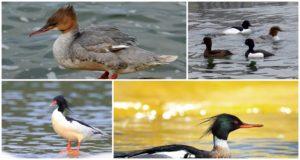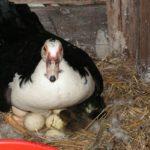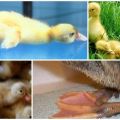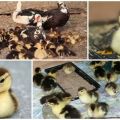Care and maintenance of day-old ducklings, how they look and the temperature in the brooder
Duck breeding is a profitable business. In everyday life, this bird is unpretentious, not capricious, and does not require much attention to itself. With a well-organized content, after 7-8 weeks you can get nutritious meat, fatty liver, warm fluff. To achieve good results, care for day-old ducklings should be carried out in accordance with all the rules, on the observance of which the immunity of an adult depends.
What do day-old ducklings look like?
Day-old chicks are small fluffy, shiny, clean, dry lumps that move actively, scream loudly if they are not satisfied with something. External indicators of a healthy herd of ducklings:
- clean, shiny eyes;
- uniform pink beak;
- the abdomen is soft, the navel area is closed, dry;
- tail and anus without adhered fecal residues;
- smooth, without defects or damage to the foot.
A healthy duckling, turned over on its back, actively resists, tries to stand up. Too small specimens are suspicious. There is a high probability that in the future they will lag behind in growth, and their content will negatively affect profitability indicators.
Where to keep little ducklings
The ideal option for raising chicks is to leave them under a brood hen. She will provide the right temperature, teach all the duck tricks.
But, if the flock is hatched in an incubator or bought at the poultry market, the breeder will have to nurse the flock.
Cardboard box
Baby ducks are placed in a large cardboard box. So that they do not freeze, a plastic container with warm water wrapped in a rag is placed inside the box. But this method of content is practiced for no more than a week. Chicks grow quickly, begin to swim even in a drinking bowl, the bottom of the box quickly gets wet.
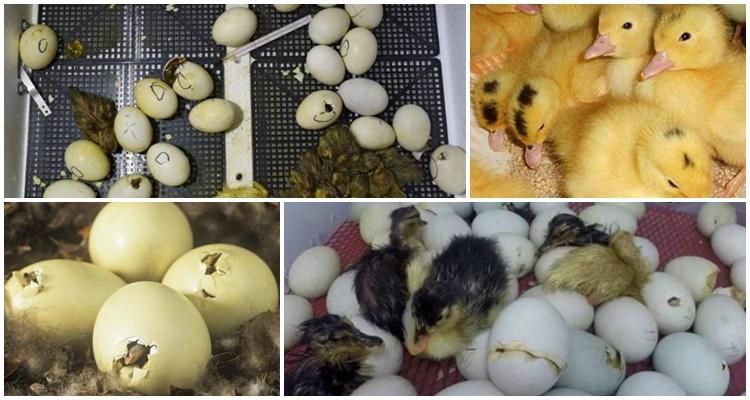
Wooden box
In early spring, day old ducklings are placed in a barn. To keep them warm, they knock down a wooden box. The walls are insulated with foam or cardboard. In one of them, a hole is made through which the bird can enter the box. A container with hot water is placed in the box (it is better to take a 10-liter canister). Cover the box with a blanket or blanket. In such a design, heat is retained for up to 8 hours.
Care rules
In the first week of life, ambient temperature is of great importance for the growth of chicks.
Conditions of detention
Recommended conditions for keeping ducks:
| Time period, by weeks | Temperature, ˚С |
| The first | 28-33 |
| The second | 18-26 |
| Third and subsequent | 16-18 |
At home, for heating ducklings, brooders are constructed from table lamps, with lampshades attached to them. To control the temperature, thermometers are attached at the level of growth of the chicks, at a distance of 10-20 cm from the edge of the umbrella.
Experienced breeders judge the compliance with the necessary conditions not by the temperature in the brooder, but by the condition of the ducklings. If the chicks are evenly distributed throughout the room, they do not stray into flocks - the parameters are normal. Refusal to eat, open beaks, heavy breathing, frequent visits to the drinker indicate that chicks are hot and need to lower the temperature. If they are cold, they squeak plaintively, climb on each other's head, huddling together. Overheating ducklings from the first day negatively affects their immunity. Chicks are often sick afterwards.

Feeding
As soon as the ducklings are dry, they are given food:
- from birth and up to 5 days, young animals are fed every 2 hours. The diet consists of finely chopped hard-boiled eggs mixed with crushed barley, oat or millet grains and herbs (clover, dandelions);
- from the 6th day of life, mash is made on the basis of dairy or lactic acid products with the addition of fish oil;
- starting from a month, the ducklings are transferred to 3 meals a day. Vegetables and food waste are added to the products already familiar to them. Ducklings eat duckweed with pleasure.
Poultry should not be fed with sour feed. A prerequisite for proper maintenance is fresh, clean water in drinking bowls.
Cleaning
The health and growth of chicks directly depends on the cleanliness and maintenance of the ducklings. Every 7 days, the feeders and drinkers are first washed with warm water, then disinfected. The room for keeping the young is also thoroughly cleaned. This helps to avoid most diseases that lead to stunted growth or death of the herd.
At what age can birds swim
Water procedures in an open reservoir are shown to waterfowl, starting from three weeks of age. By this time, the coccygeal gland of the chicks begins to produce fat, which is necessary for lubricating the plumage. This way they will not get wet. Also, swimming in cold water can provoke a cold.
Up to 21 days of age, ducklings are better off bathing in a small container indoors.
